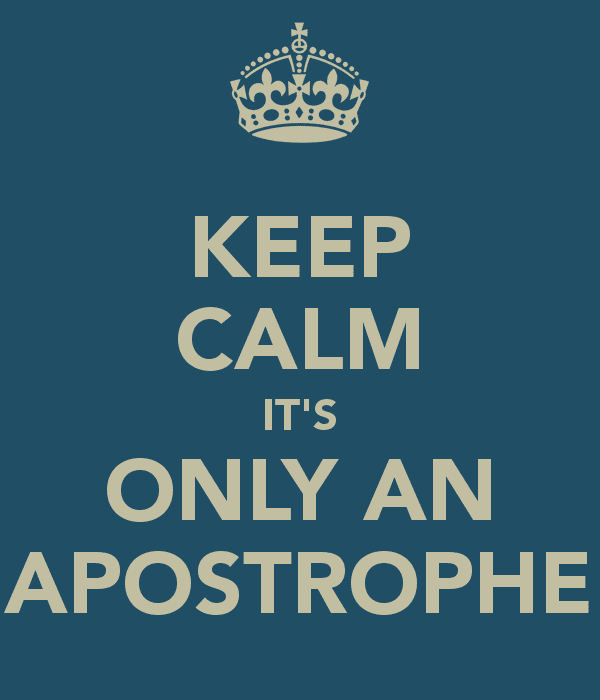
Apostrophes are used:
to indicate possession or ownership,
in contractions,
and in plurals.
Use of apostrophes to indicate possession or ownership
To indicate the possession of something you add an ‘apostrophe and s’ at the end of of the noun; that’s the case for plural nouns that don’t end in an s as well.
For example:
Singular:
Susan’s doll is wearing a yellow dress.
Plural:
The children’s rooms are messy.
For nouns and plurals that end in s, you add the apostrophe after the s.
For example:
Singular:
James’ bike is broken.
Plural:
The families’ dogs are the best of friends.
(Some of you parents may disagree with the above and say: it should be James’s, not James’. We did a bit of research and there is debate over the correct use of this apostrophe. Grammar Girl has a good blog post on exactly this topic.)
Use of apostrophes in contractions
In contractions, apostrophes are used to take the place of the letter that is taken out.
For example:
I am - I’m
We are - we’re
Do not - don’t
Often kids confuse its and it’s, where the possessive is its and it’s is a contraction of it is.
Use of contractions in plurals
When it comes to using contractions in plurals, things get tricky. Hardly any plurals have apostrophes.
For example:
2000s is correct, 2000’s is wrong
However, ‘90s is correct, because you have left out the first two numbers in 1990s. So 90s is wrong.
The hard and fast rule for using apostrophes in plurals is to use an apostrophe when the plural might be misread without the apostrophe.
For example:
You should dot you I’s and cross your T’s. - correct
Not:
You should dot your Is and cross your Ts. - wrong

